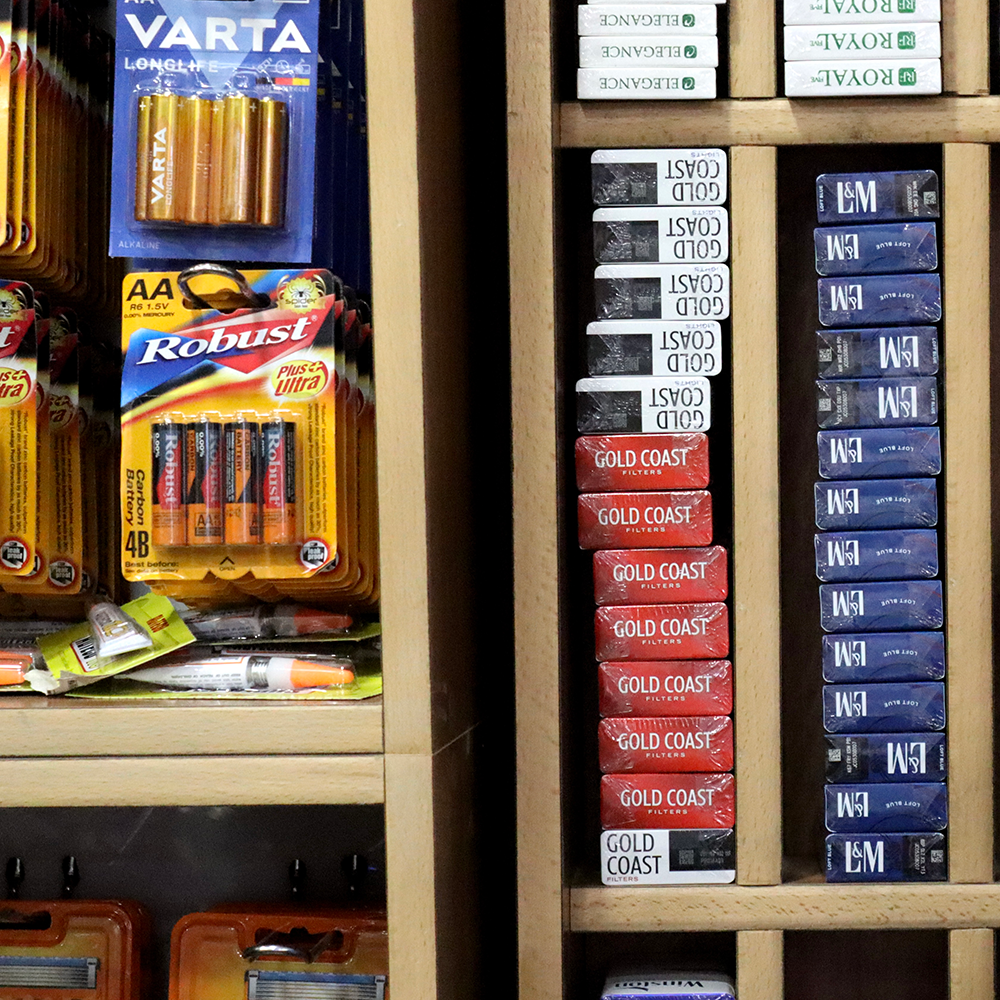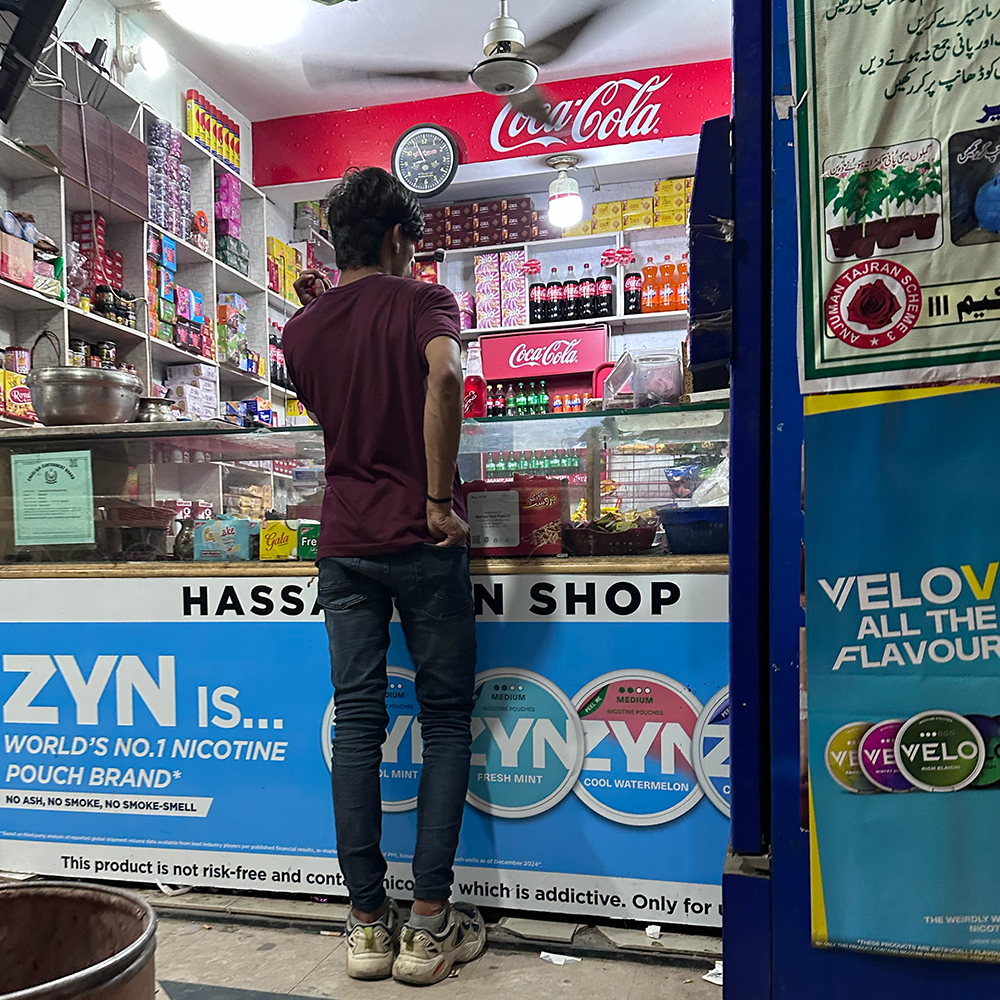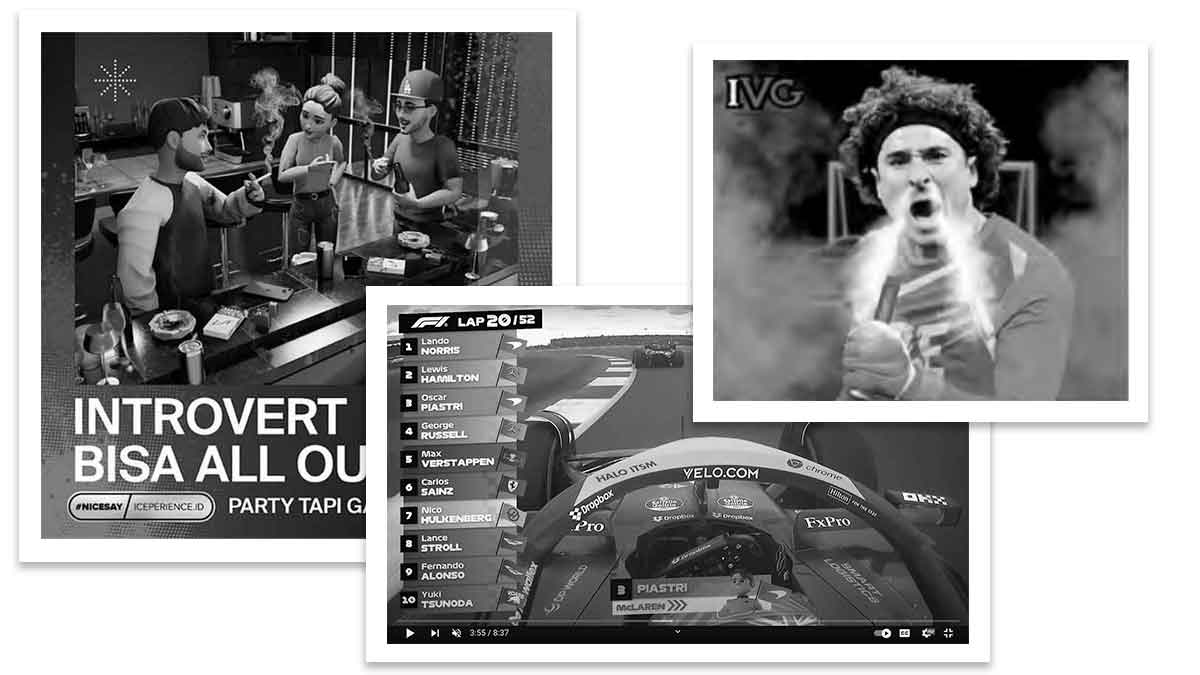- Resources
- News
-
-
Get Email Updates
Sign up for STOP's emails and never miss an update on our latest work and the tobacco industry's activity.
-
Get Funding
Ready to tackle industry interference? You could be eligible for a grant.
-
Share a Tip
Do you have information on tobacco industry misconduct in your country? Let us know.
-
Get Email Updates
Industry Marketing
September 22, 2025

Read this press release in Arabic.
Data from Egypt, Jordan and Pakistan Confirm Urgent Action is Needed to Protect Youth from Industry Marketing in Shops
(New York, USA, September 22, 2025): A new report from tobacco watchdog, STOP, reveals the alarming extent to which children and youth are being exposed to tobacco industry marketing at hundreds of retailers near schools in Egypt, Jordan and Pakistan. An analysis of tobacco and nicotine product advertising and promotion near 327 primary and secondary schools across the three countries reveals that addictive and harmful products were available, affordable and promoted in nearly 900 places.
In many of these outlets, tobacco products were displayed near sweets, snacks or toys, making it more likely children would see them and, in some cases, placing them within reach. Research links youth exposure to tobacco marketing, including in retail environments, to a higher risk of future tobacco use.
Key findings in the report, Notebooks to Nicotine: How Big Tobacco Targets Kids Near Schools Across the Eastern Mediterranean, include:
- Across the three countries, researchers identified a total of 870 retail outlets selling tobacco and/or nicotine products near the surveyed schools. This included more than half of retailers within the areas surveyed in Egypt and more than two-thirds of those in the areas surveyed in Jordan.
- The highest density of tobacco retailers was in Egypt, which has no restrictions on tobacco sales near schools, where each school had an average of 4.8 retailers that sold tobacco, compared to 2.3 in Jordan and 2 in Pakistan.
- The products being sold ranged from single cigarettes, bidis and smokeless tobacco to flavored e-cigarettes, heated tobacco products and waterpipe molasses.
- The presence of flavored products, proven to appeal to youth, is notable. In Jordan, 86% of retailers selling e-cigarettes sold flavored e-cigarettes and 55.6% of those selling heated tobacco products sold flavored HTPs. Nearly half sold flavored cigarettes. In Egypt, 60% of retailers selling cigarettes sold flavored cigarettes.
- In Pakistan, 65% of the retailers in the survey displayed tobacco and nicotine products near sweets, snacks and/or toys, as did half of the retailers in Egypt. In Pakistan, 95% of the retailers displayed tobacco products at children’s eye-level.
- In Egypt, 85% of surveyed retailers sold single cigarettes; in Pakistan, that figure was even higher at 99% despite a ban on the sale of single sticks.

This report confirms that the implementation and enforcement of strong policies to regulate how and where tobacco is sold is more urgently needed than ever...
Dr. Raouf Alebshehy, Managing Editor of Tobacco Tactics
Despite all three countries banning tobacco advertising at the point of sale, researchers noted a range of promotional tactics including brightly colored banners advertising cigarettes hanging outside a kiosk; flavored e-cigarettes displayed at children’s eye-level, next to candy, at a street vendor; and single cigarettes sitting in a paper cup on the check-out counter at a grocery store.
“The tobacco industry knows that its most profitable lifetime customers are those who become hooked at an early age, so it’s no surprise to find all kinds of products near schools,” commented Jorge Alday, Director of STOP at Vital Strategies. “Flavors, accessibility and promotions are a formula to fuel addiction among the next generation, bolstering industry profits while damaging public health for generations to come.”
Among the report’s recommendations is a ban on tobacco and nicotine product sales and advertising within a specified minimum distance from places where young people congregate, such as playgrounds and schools. At least 29 countries have implemented this type of policy, including Bangladesh, China, Chile, Ethiopia, France, India, Jordan, Nepal, Pakistan, the Philippines, Qatar and Vietnam. Research suggests this helps to reduce the density of tobacco retailers, potentially reducing children’s exposure to tobacco advertising and supply of tobacco products. However the STOP report, that includes data from Jordan and Pakistan, adds to the evidence that stronger enforcement is needed.
“This report confirms that the implementation and enforcement of strong policies to regulate how and where tobacco is sold is more urgently needed than ever to help protect children and young people in the Eastern Mediterranean region,” said Dr. Raouf Alebshehy, Managing Editor of Tobacco Tactics at the University of Bath Tobacco Control Research Group and author of academic papers analyzing the impact of policies to control the tobacco retail environment. “These policies should include reducing the number of tobacco retailers, banning sales of tobacco near schools and other places where children congregate and banning tobacco advertising at points of sale.”
Please contact the STOP press office for more information or to speak to a STOP spokesperson.
Notes to Editors:
Methodology
In the three studies featured in the STOP report, researchers mapped a radius ranging from 100 to 150 meters (depending upon the study) around selected primary and secondary schools. Trained data collectors visited points of sale within that radius, documenting how many of them sold tobacco or nicotine products and what tactics they were employing to appeal to children. The number of schools identified by the researchers and retailers found selling tobacco and nicotine products near those schools were as follows:
Number of schools identified
- Egypt: 100
- Jordan: 94
- Pakistan: 133
Number of points of sale (POS) that sold tobacco and nicotine products
- Egypt: 455
- Jordan: 147
- Pakistan: 268
Further detail on the methodology is contained in the report.
Tobacco Use in the Eastern Mediterranean Region (EMR)
Amid declines in smoking in other regions, the tobacco industry is working to increase sales in the EMR. An estimated 31% of the population already uses tobacco and it is the only region in which tobacco use is expected to increase among men in the coming years.
The region has a young, growing population that the industry sees as an opportunity: around one-third of the region’s population is between the ages of 15 and 29, a key demographic as most lifetime tobacco users start before the age of 21.
The industry is working to increase production, including through the purchase of local tobacco companies and partnerships, and expanding the range of addictive tobacco and nicotine products available for sale.
The use of waterpipe is growing among young people in the region, due in part to the introduction of flavored waterpipe tobacco and inadequate regulations. It is estimated that 13–15-year-olds use waterpipe more frequently than cigarettes.
More than 213,000 people in Egypt, Jordan and Pakistan die from smoking every year.
Reducing children’s access to tobacco and nicotine products
The report sets out ways to address this problem, including:
- implementing distance- and population density-based retail regulations to reduce the overall number of tobacco vendors
- banning tobacco sales within specific distances of schools and other youth-focused spaces
- adopting and implementing comprehensive tobacco marketing bans including at point of sale
- age-specific sales restrictions and
- banning flavored products.
About STOP
STOP is a network of academic and public health organizations operating globally as part of the Bloomberg Initiative to Reduce Tobacco Use. STOP connects experts in all aspects of the tobacco industry’s business to expose and counter its relentless efforts to sell harmful, addictive products. For more information visit exposetobacco.org.




